You have just replaced your old alternator with a new one and now you're wondering if you should charge your car battery. The last time you checked, it was fully charged. We have researched if the battery's self-discharge rate while replacing the alternator is substantial enough to warrant charging the battery.
If the car battery was already fully charged while your alternator was being replaced, then it's okay not to recharge it. After all, replacing an alternator won't take more than two hours. Ideally, car batteries should be on float mode with a car battery charger when not in use for a few hours. Float charging helps compensate for the discharge rate of car batteries when they're not in use.
Car battery charging is one of the most important maintenance routines that every car owner should know. It's as important as knowing how and when to change the car's oil. Most of us are familiar with the routine, however, there may be some extra information you can use. Read on to learn more about when to charge your car battery, and what to expect when your car battery is disconnected from your car.
What Will Happen to a Car Battery If I Disconnect It From the Car?
There are times when we have to disconnect the car battery from the car, especially if there's something we need to fix that requires the battery to be disconnected.
However, nothing really serious is going to happen to the battery unless you're planning to store it for a very long time, at least a few weeks or months. Aside from your car's clock and radio presets resetting, your battery is going to be fine.
Does Replacing the Alternator Affect the Car Battery?
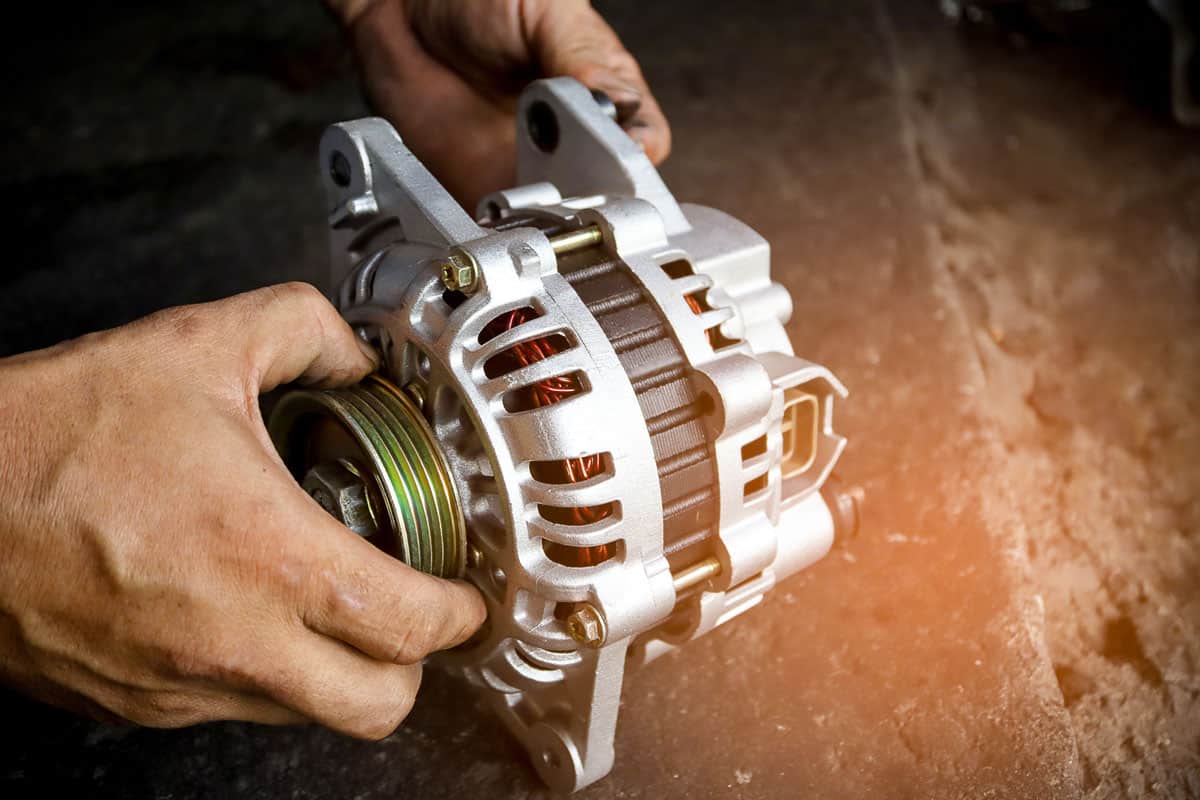
An alternator functions as a generator that converts mechanical energy into electrical energy. It charges your car battery when the engine is running. In most cases, the replacement of an alternator will have a significant impact on the car battery.
Needless to say, you can still crank the engine up even if you have a faulty alternator. In this case, the engine will draw power from the battery. The battery should have sufficient charge to do this.
Since the alternator is faulty, your car battery will eventually be depleted since nothing is charging it. In other words, you can use your car as long as the battery has enough charge to keep the engine cranking.
When Should You Charge Your Car Battery?
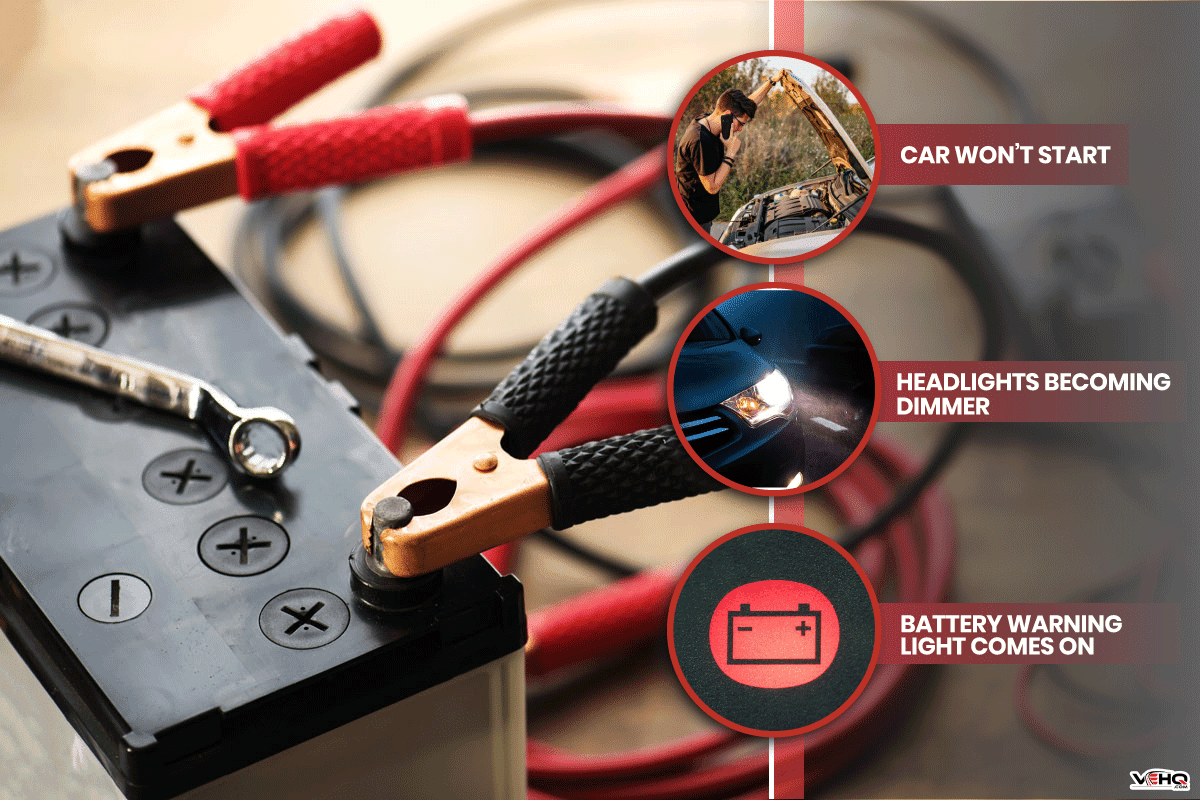
Your car will give you signs when it’s time to charge. Here are the most common ones:
The car won't start
Your car's ignition system draws power from the battery. In order for the engine to crank up, the battery must have enough juice to provide enough current to start the car.
Headlights becoming dimmer
Your car's headlights as well as other electrical components such as radio, air conditioning, and heating systems draw power from the battery as well.
You'll know if your battery is running low when your headlights dim or go out. The same can happen to your radio and air conditioning system.
Battery warning light comes on
The most obvious symptom of a weak battery is the battery warning light coming on. However, you should confirm that the warning light is consistent with the symptoms your car is experiencing.
Otherwise, you might only have some wiring issues that are causing the electrical components not to get enough power. This can trigger the battery warning light to come on.
It also pays to check if there are no loose connections in the battery terminal. Check for corrosion and grimes. These are certainly signs there is loose contact in the battery terminals. You can use PB Blaster to get rid of corrosion and clean the terminals.
Check out PB Blaster on Amazon.
Battery Light is On After Alternator Replacement - What's Going On?
By the time you had the alternator replaced, you would already have a dead battery. Check the battery using a multimeter and see if you'll get 12.6 V while the battery is disconnected. If you get any voltage reading lower than that, then you need to charge the battery.
Since you've just had your alternator replaced, it is safe to assume in this scenario that you must have left the car in the garage for at least a week while trying to find time to get it fixed.
If you work full-time on weekdays, then the weekend is the only available time you can spare to get your car serviced.
Since a car with a faulty alternator draws power from the battery to crank it up, you would have the car running for probably a couple of days before leaving it in the garage.
How Long Should I Let My Car Run After Replacing the Alternator?
The answer to this question depends on your car battery's state of charge. A state of charge is a measure of how much juice remains in the battery.
If the state of charge drops below 50 percent, the alternator will need to recharge the battery before it can begin supplying enough amps to crank the engine. It is recommended that you run the car for half an hour and allow the alternator to completely recharge the battery.
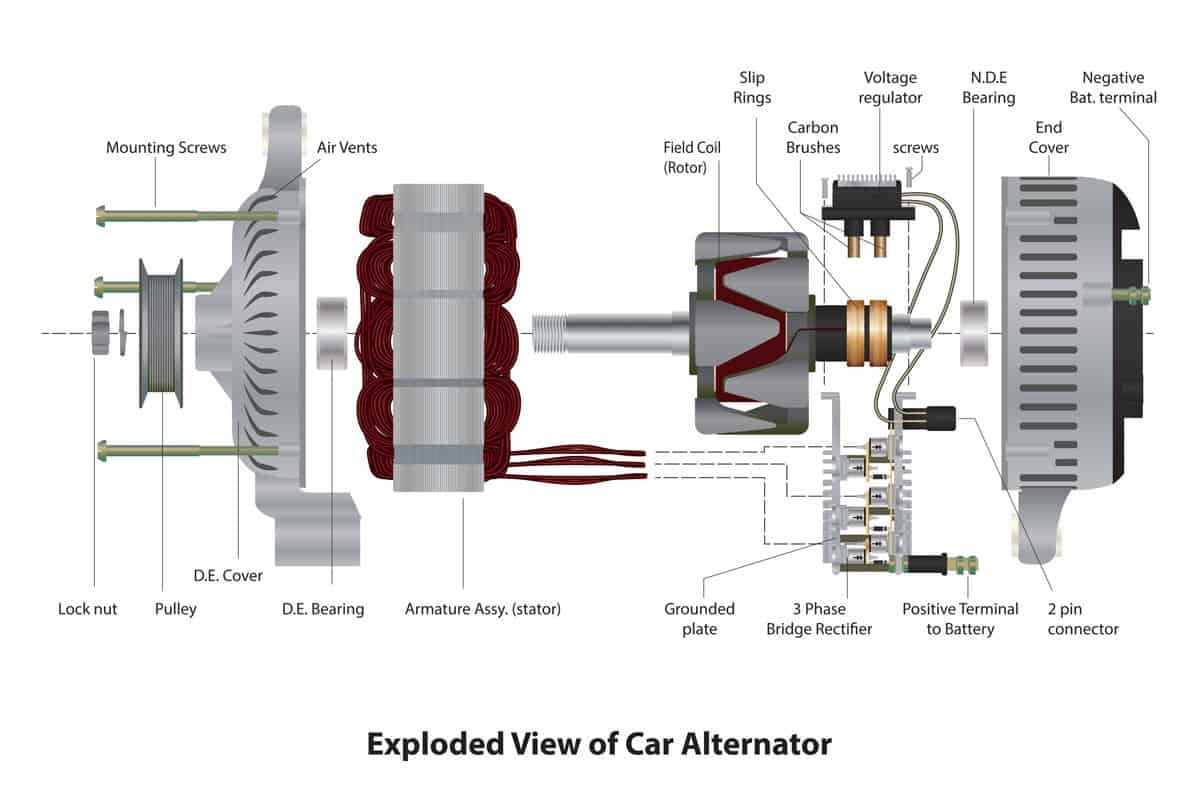
Can My New Alternator Drain My Car Battery?
A car alternator has an internal voltage regulator to keep the current within a set range. This ensures that you don't overload or underload the battery.
Sometimes, there can flaws even in new parts. You might have bought a new alternator with a defective voltage regulator. This might explain why your new alternator drains your battery faster than normal.
Can an Alternator Drain Battery Even If the Engine is Not On?
If you suspect your alternator is draining your car battery, you can check its diode for physical damage or corrosion. A diode is a tiny electronic component that allows electricity to flow in only one direction.
A good alternator diode should direct the flow of electricity from the alternator to the battery. If it goes the other way around, then you have a bad alternator diode. Instead of charging your battery, it will drain it.
Should I Replace the Car Battery or the Alternator First?
If you're experiencing a charging problem with your car, you don't want to jump straight into replacing whichever you think is causing the problem.
Instead, start by trying to identify the issue. Replacing your alternator is an expensive and complicated job. This is why it is important to identify whether your issue is the battery or the alternator before you start this process.
You can start troubleshooting the battery first since it's much easier. We've already discussed the voltage constants in a car battery in the preceding sections so just backread for reference.
How to Test an Alternator
To troubleshoot an alternator, simply hook up the red clamp of the multimeter to the longest screw that you will find in the alternator. This is the positive ground. The black clamp should be connected to the body of the alternator, which is the negative ground.
The alternator has the same voltage constant as a car battery. When the alternator is in good condition, the voltage reading should be about 12.6 V when the engine is not running and a voltage reading between 13.8 V to 14.4 V when the engine is running.
If it reads lower than 12 volts, then your alternator isn't charging the battery. In addition to checking the voltage, check how much load the battery can handle.
Check out this digital multimeter on Amazon.
What is a Load Test?
A load test is a test that is used to measure the performance and health of a car battery. It applies a set of pre-defined conditions (which is 50% of the battery's cold cranking amps) to the battery, which are defined by an operator, and measuring the performance of the battery under those conditions.
Check out this car battery load tester on Amazon.
Does Idling the Car Charge the Battery?
A car's alternator runs whenever the engine is running. Since a car's engine is running even if it's idling, this means that the alternator is charging the battery even when the car is not moving.
What Causes an Alternator to Go Bad?
There are many reasons why the alternator may fail, and you will need to know about them to protect yourself from expensive repairs. Some things that may cause the alternator to stop working include:
Incorrectly jump-starting the car
Alternators are designed to sustain a continuous load, but not when the polarity of the load is reversed. This is why it's important that you jump-start your car the right way to avoid damaging the alternator.
Some fuses will be blown out in the process to bail you out, so you may not see the effect right away. However, it will eventually show up if you keep on repeating the same process.
Overloading
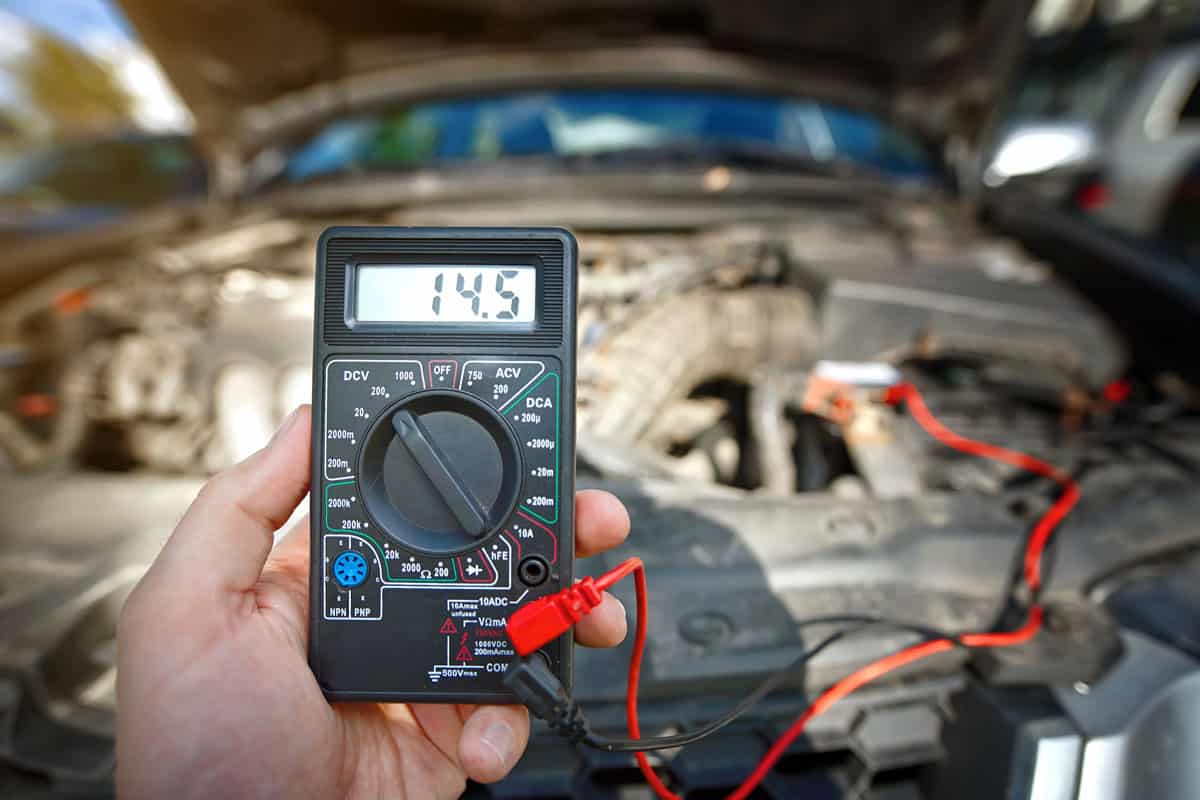
An alternator has a certain capacity that it can sustain. If you overload the alternator with lots of car accessories that draw current simultaneously, the alternator may not be able to keep up.
This is bad, as the alternator will try to charge the battery and provide power to the extra accessories at the same time. The alternator will have no way to get the current required to power them all up altogether since it has already exceeded its capacity. This can cause the alternator to overheat and fail.
Overtightened belt
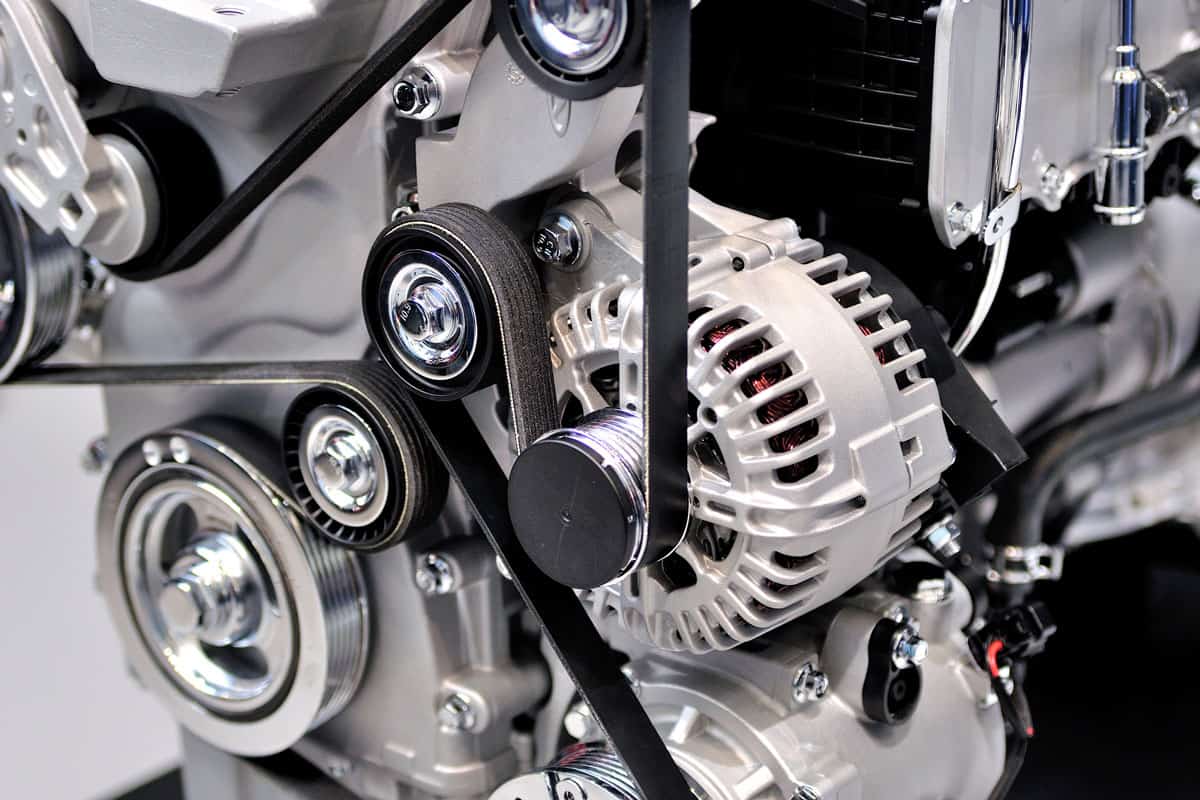
Alternators have serpentine belts that enable them to drive the alternators at a constant speed. Serpentine belts should have the right tension in order to achieve this.
An overtightened serpentine belt will affect the rotating speed of the pulleys, which in turn may cause the belt to burn out the alternator's bearings.
The easiest way to check for correct belt tension is to check for any play in the belt while it's attached to the pulleys. The play should be good enough that it won't cause the belt to become rigid when rotated.
In Closing
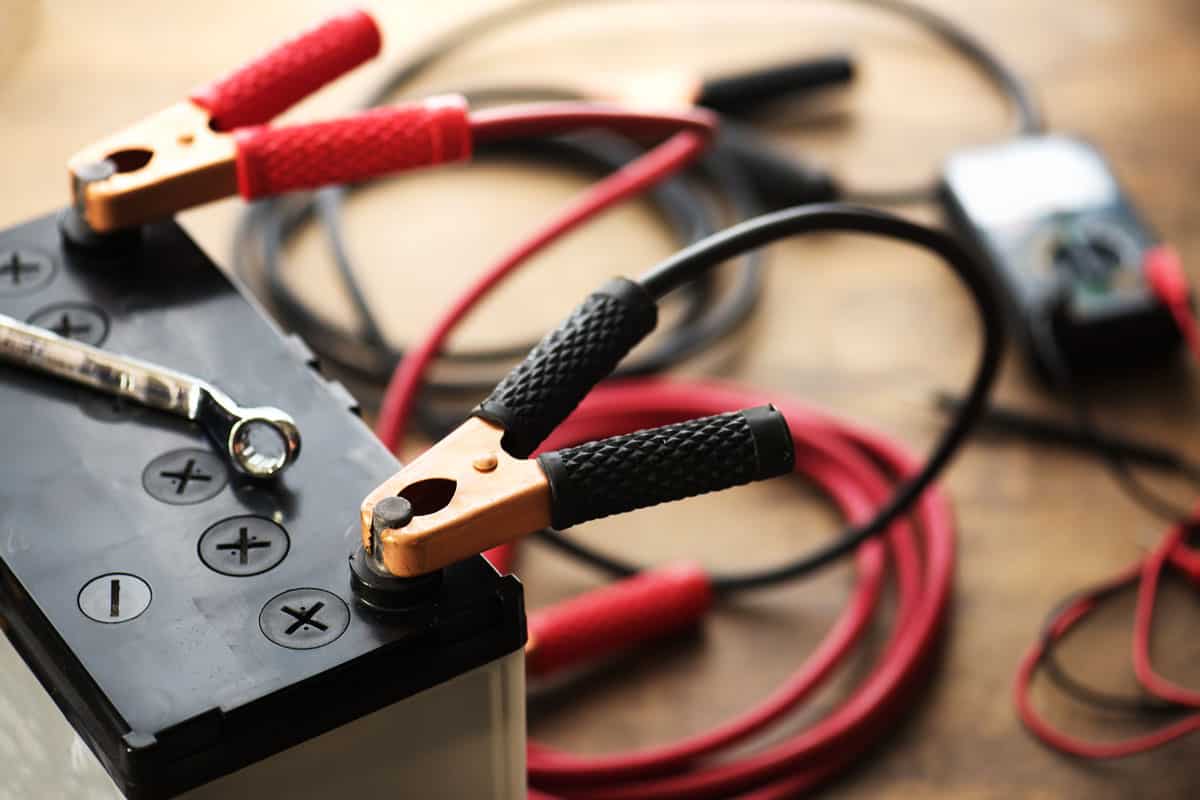
You should always charge your car battery after a repair. If you're going to be gone for a few hours, though, you don't need to worry about it, especially if it's fully charged. Just make sure to set it on float mode if you're not planning to use the car battery anytime soon to compensate for the self-discharge rate.
You might also like:
How Long Does It Take To Replace An Alternator [Inc. DIY At Repair Shop]?



